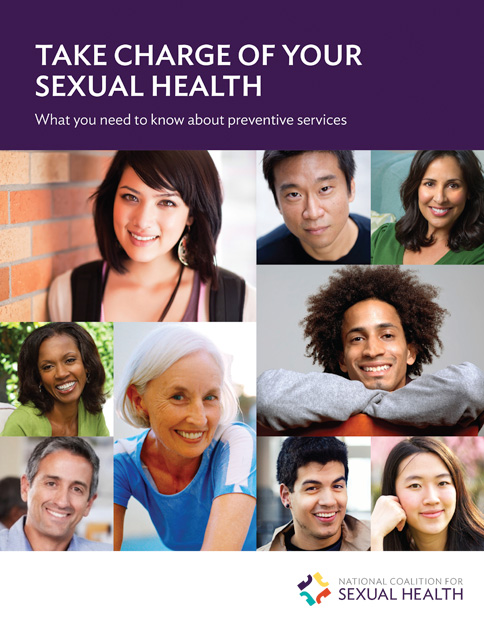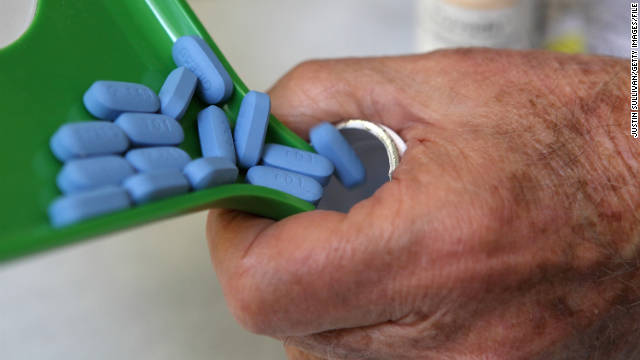Managing Partner
| |
Learn more about Partnership for Prevention's initiatives here. |
|
Find the NCC on Facebook!

The National Chlamydia Coalition is now on Facebook. To follow the NCC, simply visit our page and click the "like" button. Don't forget to share it with your friends and colleagues!
| | |
|
|
|
Dear Colleague,
Welcome to NCC News. This online newsletter was created to keep you up-to-date on all things chlamydia and related areas of interest. We hope you will find it useful and informative. Please feel free to share this with your colleagues who also may find it of use. |
 |
NCSH Launches New Guide to Sexual Health Care Services
|
The National Coalition for Sexual Health (NCSH) has released a new, easy-to-use guide and website, Take Charge of Your Sexual Health: What you need to know about preventive services. This guide informs  men and women of all ages about recommended preventive services, such as screenings, vaccines, and counseling, to help protect and improve sexual health. The guide, which was audience-tested with members of the public, includes action steps for achieving good sexual health, information about recommended sexual health services, tips on how to find and talk with a health care provider, and a list of additional sexual health resources.
Take Charge of your Sexual Health can be easily accessed online and is available for download and print in full PDF format or in short chapters. It is smartphone compatible so patients may access the full guide, including questions to ask your provider and charts of recommended services, while on the go or at the doctor's office.
|
 |
Resource on Teen Pregnancy Prevention Programs
|
May is National Teen Pregnancy Prevention Month! A supplement in the March 2014 issue of the Journal of Adolescent Health contains articles from the Office of Adolescent Health and its grantees about  successes and lessons learned since the inception of the federally-funded Teen Pregnancy Prevention Initiative. Implementing Evidence-Based Teen Pregnancy Prevention Programs: Legislation to Practice covers topics such as the history of the Federal Teen Pregnancy Prevention Program, the implementation of evidence-based replications, and innovative strategies to reduce adolescent pregnancy. It also includes commentary on how federal initiatives can support the implementation of evidence-based programs to improve outcomes for adolescents. successes and lessons learned since the inception of the federally-funded Teen Pregnancy Prevention Initiative. Implementing Evidence-Based Teen Pregnancy Prevention Programs: Legislation to Practice covers topics such as the history of the Federal Teen Pregnancy Prevention Program, the implementation of evidence-based replications, and innovative strategies to reduce adolescent pregnancy. It also includes commentary on how federal initiatives can support the implementation of evidence-based programs to improve outcomes for adolescents.
|
 |
Just-Released Guidelines: PrEP Use for HIV Prevention
|
The US Public Health Service and the Centers for Disease Control and Prevention (CDC) released new clinical guidelines recommending that healthcare providers consider pre-exposure prophylaxis (PrEP) for  patients at substantial risk for HIV infection. These guidelines provide health care providers with recommendations on the use of PrEP to prevent HIV, and include a supplement with additional materials and tools for clinicians who prescribe PrEP and their patients. The guidelines are also an important reference tool for advocates and individuals seeking PrEP, since they lay out the arguments and evidence for a strategy that is still unfamiliar or relatively unknown to some providers. An archive of the CDC Public Health Grand Rounds session on the use and challenges of PrEP as a tool to prevent the transmission of HIV is now available as well. patients at substantial risk for HIV infection. These guidelines provide health care providers with recommendations on the use of PrEP to prevent HIV, and include a supplement with additional materials and tools for clinicians who prescribe PrEP and their patients. The guidelines are also an important reference tool for advocates and individuals seeking PrEP, since they lay out the arguments and evidence for a strategy that is still unfamiliar or relatively unknown to some providers. An archive of the CDC Public Health Grand Rounds session on the use and challenges of PrEP as a tool to prevent the transmission of HIV is now available as well.
|
 |
New Study on Rates of Chlamydia and Gonorrhea in Adolescents
|
According to a new study presented at the 2014 Pediatric Academic Societies Annual Meeting, rates of gonorrhea reached a historic low and rates of chlamydia remained steady among US adolescents in 2012. Researchers analyzed national chlamydia and gonorrhea case report data for 2003-2012 from the National Electronic  Telecommunications System for Surveillance and US Census Bureau and found a 14% decrease in gonorrhea infections among adolescents, a historic low for this age group. Also, from 2003 to 2011, the chlamydia rate among adolescents increased 41%. In 2012, however, the rate of chlamydia among adolescents decreased to 2,001.7 cases per 100,000, from 2,120.8 cases per 100,000 population reported in 2011. This is the first time since national chlamydia reporting began that rates of chlamydia infections have dropped. Telecommunications System for Surveillance and US Census Bureau and found a 14% decrease in gonorrhea infections among adolescents, a historic low for this age group. Also, from 2003 to 2011, the chlamydia rate among adolescents increased 41%. In 2012, however, the rate of chlamydia among adolescents decreased to 2,001.7 cases per 100,000, from 2,120.8 cases per 100,000 population reported in 2011. This is the first time since national chlamydia reporting began that rates of chlamydia infections have dropped.
|
 |
New Study Suggests more than 2/3 Americans have HPV
|
A new study in the Journal of Virology suggests that more than two-thirds of healthy Americans are infected with the human papillomavirus (HPV). Researchers examined DNA from tissue samples of about 100 men and women and found that 69% were infected with HPV. Altogether, the researchers found 109 strains of HPV, out of 148 known strains. However, most of these infections are likely harmless and will go away on their own, as participants did not have symptoms of illness.
|
 | New Website on Health System Changes | |
The National Center of HIV/AIDS, Viral Hepatitis, STDs, and TB Prevention (NCHHSTP) at the Centers for Disease Control and Prevention (CDC) launched a new online resource, Prevention of HIV/AIDS, Viral Hepatitis, STDs, and TB Through Health Care Website, to help state, local, and tribal public health agencies, community-based organizations, and other partners leverage changes  in the health system to strengthen the delivery of preventive services. To help develop a fully integrated approach to address NCHHSTP program objectives through the provision of health care, the website offers three sub-websites: Health Departments; Preventive Service Tables; and Resources on the Changing Health Care System. in the health system to strengthen the delivery of preventive services. To help develop a fully integrated approach to address NCHHSTP program objectives through the provision of health care, the website offers three sub-websites: Health Departments; Preventive Service Tables; and Resources on the Changing Health Care System.
|
 |
KFF Infographic on Preventive Health Services for Women
|
A new infographic from the Kaiser Family Foundation (KFF) examines preventive health services for women. Visualizing Health Policy:  Preventive Services for Women and the ACA includes information on missed opportunities for preventive counseling on risk factors and sexual health. It also reveals that many women are unaware that the Affordable Care Act (ACA) requires private plans to cover many preventive services without cost sharing, and that many women also regard clinicians as the most trusted source for information on the ACA. Preventive Services for Women and the ACA includes information on missed opportunities for preventive counseling on risk factors and sexual health. It also reveals that many women are unaware that the Affordable Care Act (ACA) requires private plans to cover many preventive services without cost sharing, and that many women also regard clinicians as the most trusted source for information on the ACA.
|
 | NPWH Launches New Well Woman Visit App
| |
Nurse Practitioners in Women's Health (NPWH) released a mobile phone app for providers. This free mobile app is specifically designed for healthcare providers and is intended to be a helpful tool for well women visits. With a special focus on STD screening, the app compiles the most commonly used clinical guidelines and places them at your fingertips. It is available for iPhone, iPad and Android. |
|
|
|
|